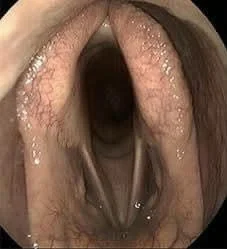There are many types of respiratory noise that can cause performance problems for your horse.
The most common noises that affect performance are located in the upper airways.
We all love physics, so for simplicity let me explain one little fact. When an airway narrows by 1/4 of its normal diameter, the resistance to air flow in the upper airways is 16 times greater. Anything therefore that affects the normal anatomy of the upper airways will affect resistance to airflow and reduce performance.
I wanted to mention one of the commonest upper respiratory problems we hear in our sport horses. It is caused by paralysis of the left side of the larynx and due to the type of sounds produced from obstruction of air flow, horses are referred to as a ‘Roarer’.
The laryngeal structure has two curtains which act like a trap door. When the curtains are open they allow air to flow from the nasal cavities to the lungs, but when the curtains are closed they allow food to pass and be swallowed. This prevents food and fluids from entering the airways which would be very dangerous.
In some horses, the nerve that opens the left curtain becomes damaged so that it is remains closed and obstructing the airways during breathing. As mentioned above, the resistance to air flow is then dramatically increased.
At low levels of exercise this doesn’t affect performance because horses are such amazing athletes. However, during strenuous exercise, or during higher level dressage when the horse is on the bit doing collected work, it can affect performance.
Can laryngeal paralysis be fixed?
The paralysed curtain can be surgically fixed open like a curtain tie. This fixes the problem of the obstructed airway, but isn’t without potential long term problems. When the curtain is fixed back, small amounts of food particles can end up in the respiratory tract causing lower airway inflammation and again can affect performance . Therefore following this surgery there are strict management requirements for the horse going forwards.
What causes laryngeal paralysis?
Horses can be born with this condition. It can be a low grade where the curtain is mostly open, or progress to high grade where it is completely obstructed.
In addition to being born with the problem, any neck trauma, or intravenous injections that come out of the neck vein, can damage this nerve as it runs along the jugular groove of the neck.
Important tip: Any injections given in the neck should be done by a qualified or experienced person to prevent this issue from occurring.
I hope none of you experience this issue with your horses. Please ask if you have any questions.

